Welcome to Newsletter Operator!
Thank you for all the support this week.
In today’s email:
8 unconventional ways to grow your newsletter
How The Hustle and Hampton create content
Insights on the Barstool Sports deal
And much more…
Deep Dive
8 Unconventional Ways to Grow Your Newsletter
Today’s deep dive is a guest post from Ciler Demiralp.
Ciler interviews successful creators about how they build their newsletters, and shares those insights in her free newsletter.
Ciler will take over writing from here…
I interviewed 26 inspiring newsletter creators within Newsletter Circle to uncover the secret recipe for newsletter growth.
As I delve into the insights I’ve gathered, I’ve discovered some commonalities among these creators.
One of these common traits is their boldness in applying uncommon strategies for expansion. They love experimenting until they find the most effective methods tailored to their newsletters.
Here are 8 examples of “beyond-ordinary” growth strategies that you can integrate into your newsletter business.
Eric Lam built an AI newsletter with 534 subscribers just in 4 days and gave it away for free on Twitter.
He achieved this by following three straightforward steps:
Idea test: He tested his idea on Reddit and confirmed the potential
Setup: He set it up on Beehiiv and branded it in a few hours
Distribution on Reddit: He made a post on Reddit.
The result was a success: The next day, he woke up to 250 subscribers and the rest came over the next few days.
To prevent any distraction from his main newsletter, Exploding Ideas, he gave it away for free rather than selling it.
This was a clever approach because;
He effectively showcased his expertise on Reddit
He is appreciated by his existing audience
The tweet got viral and attracted new followers & subscribers
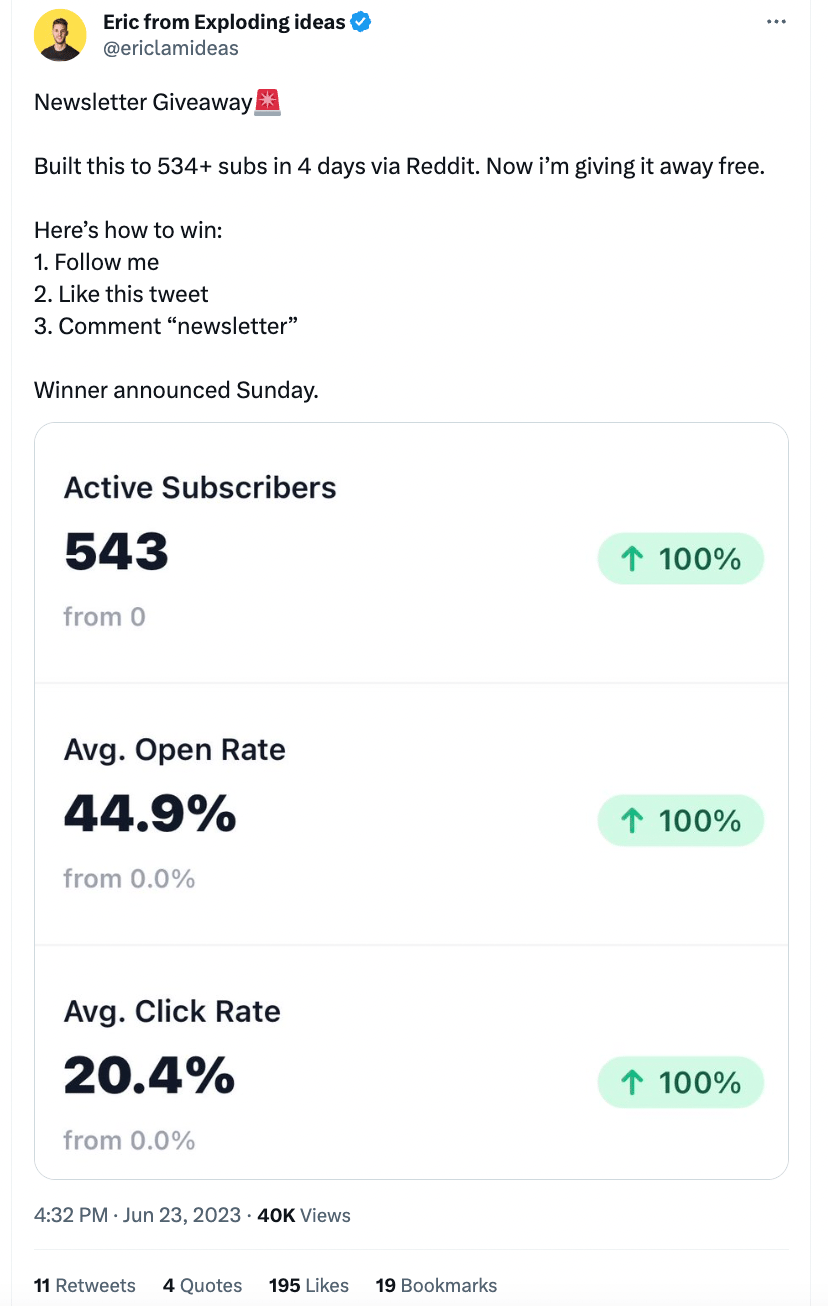
Read the full interview here.
Anthony Castrio cracked the code of paid growth for his daily AI newsletter, Bot Eat Brain.
Despite having a clear path to turn $10k into 10,000 additional readers, he faced a shortage of enough capital to invest.
As a solution to this problem, he sold 20% of his newsletter for $10,000 in Apr’23.
The agreement involved a silent partnership.
The valuation was determined based on the current size of the newsletter (about 1,000 readers), the rate of growth, and the opportunity.
Currently, Bot Eat Brain has 20,000+ subscribers and Facebook Ads is the main source of growth.
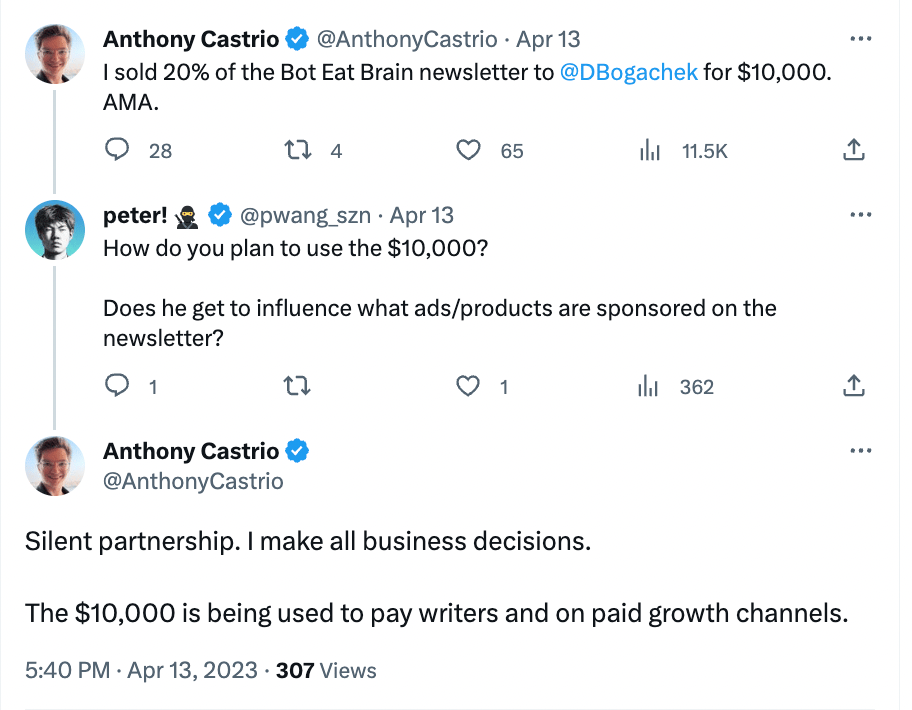
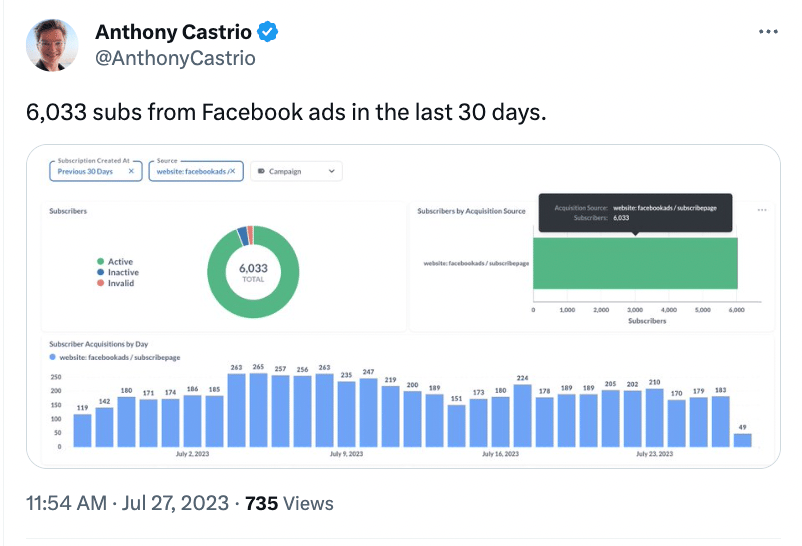
Read the full interview here.
3) Build a unique referral program
Ali Abouelatta has experimented diverse set of growth strategies to reach 76,000 subscribers with his newsletter First 1000.
One of these strategies is a referral program.
In the early days of his newsletter, he used a typical referral program based on multiple milestones.
But he saw some issues:
Stumbling blocks: People get stuck on reaching higher milestones and give up. (going from 25 referrals to 50 is harder than going from 1 -> 5)
Low ROI: Encouraging everyone to refer 1-2 people has low returns and is complicated.
So he created his own referral system, called Exploding Referrals, that didn’t exist anywhere else. Based on this:
Advocate focus: He concentrated on motivating top advocates, pushing those with 50 referrals to aim for 100 or more.
Monthly reset: Each month, a new reward and milestone were introduced and people started from 0 again.
This created a sense of urgency and prevented getting stuck in higher milestones.
Lean promotion: He promoted the referral program less (once every 2-4 issues), using different sections & formats to prevent “promotion blindness”. This leads to a 400% increase in click rate.
Using this approach, Ali gained 1,877 out of his first 10,000 subscribers.

Read the full interview here.
4) Offer a shout-out in your newsletter as a referral gift
Speaking of referrals, here is another great example.
Chenell Basilio created a section called “Community Spotlight” in her newsletter Growth In Reverse.
The rule is simple: If you share Growth In Reverse with 10 people, you get featured in that section.
This is a well-crafted one because:
It is a relevant source of motivation, considering that Chenell’s newsletter is widely read by creators.
Each shout-out gets between 50-80 clicks, making it a win-win.
This strategy cleverly fosters a sense of community spirit and builds stronger relationships.
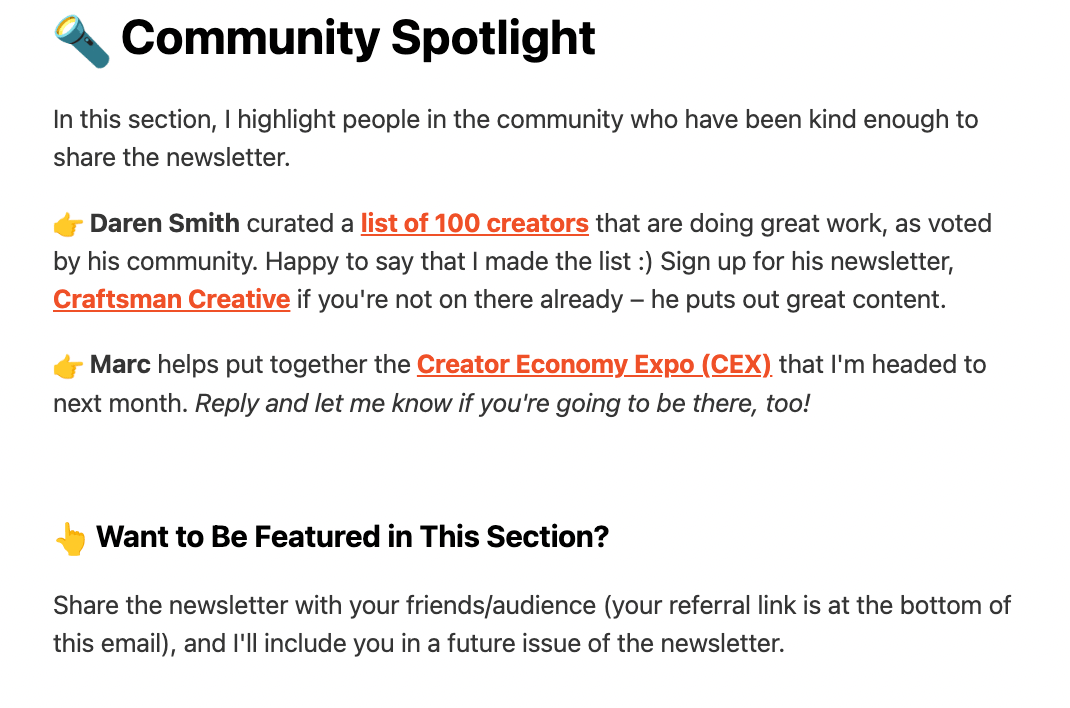
Read the full interview here.
5) Use Twitter DMs to turn followers into subscribers
“Fast growth” is not always the priority. Allocating time to foster connections could yield the most substantial returns in the long term.
Dylan Redekop focused on Twitter as his main platform to gain initial subscribers of Growth Currency.
In addition to regular posting about his newsletter, he sent DMs to each and every new Twitter follower, to thank for the follow and introduce his newsletter.
In Dylan’s words:
“It might have felt a little “pushy,” but most people politely replied and some of those DMs turned out to be great connections I still DM 2 years later.”
Read the full interview here.
Hacker News, a community site run by Y Combinator, remains an underutilized platform for newsletters within the tech and startup spaces.
Recognizing this potential, Jaisal Rathee strategically launched “Insanely Useful Websites” newsletter on Hacker News 4 months after its launch with 2,000 subscribers.
The results were impressive:
8,000 visits in 24 hours
Over 700 subscribers in 48 hours
Tones of valuable feedback
P.S. He grew this newsletter to 5,000 subscribers and sold it 8 months after the launch.

Read the full interview here.
7) Be ruthless about reaching out to experienced operators and asking for feedback
CJ Gustafson has been sending his newsletter “Mostly Metrics” to a few hundred people every week for almost 18 months since its launch.
In the past year alone, he managed to grow his subscriber base to over 31,000!
How did things change?
When CJ Gustafson had 300 subscribers, he reached out to Lenny Rachitsky, the mastermind behind Lenny’s Newsletter with 480K subscribers.
Lenny made him question his target audience and the problem he was addressing for them.
This led CJ to realize that he had been writing primarily for himself.
However, once he defined his target persona and began crafting content for this specific audience, everything started to fall into place.
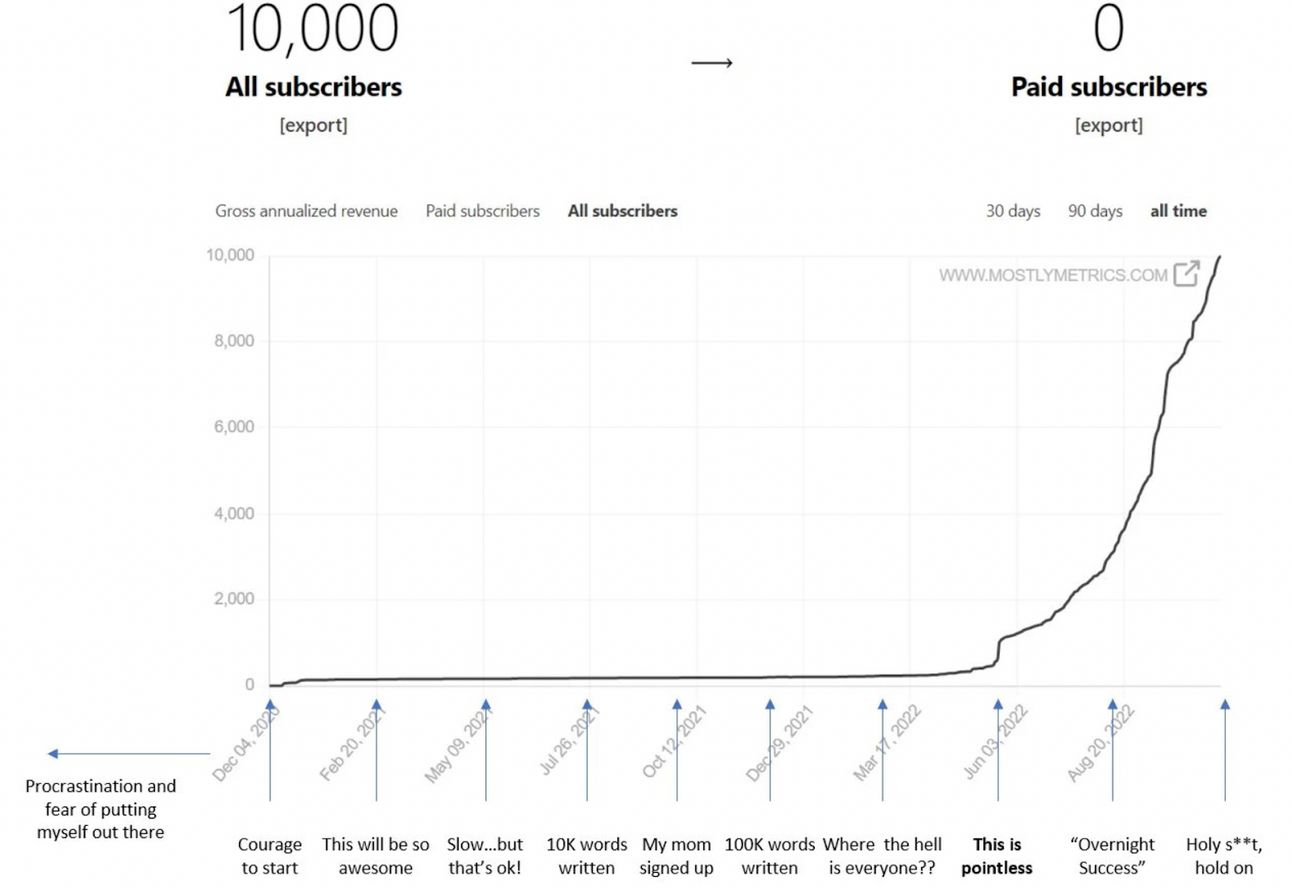
Read the full interview here.
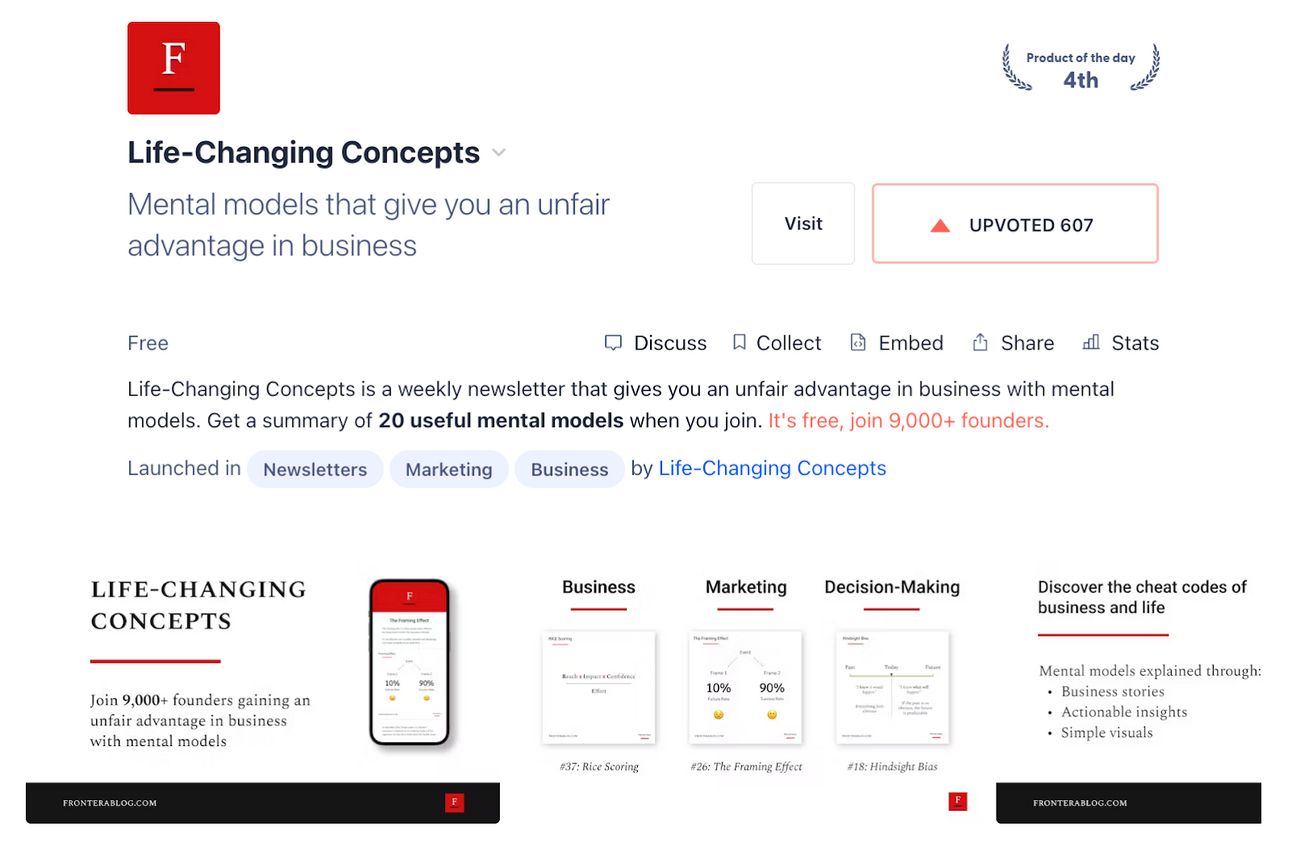
Ozan Irturk is the creator of Life-Changing Concepts, a weekly newsletter sharing mental models that give founders an unfair advantage in business.
He grew his newsletter to over 11,000 subscribers with over 60% open rate in 2 years.
1,500 out of these 11,000 subscribers came from his successful Product Hunt launch at the end of Apr’23.
Let’s zoom into the results, his key learnings and the preparation process he shared:
Results:
Finished the day in 4th place
Became the 3rd product of the month in the marketing category.
1,500 subscribers from the launch.
Most of them joined on the launch day and the day after (Product Hunt sends a newsletter with the top 10 products of the previous day).
And the rest came in the 15 days after the launch.
His Key Learnings:
Product Hunt has a particular community.
“A big audience on other platforms doesn’t necessarily translate into a launch success, so it’s important to connect with active people on PH before the launch.”, he says.
Choosing the day depending on your goal is important.
His goal was to get subscribers — not become the first product of the day.
So he launched on a competitive but high-traffic day (Thursday) instead of a weekend.
Copy and visuals matter.
It is critical to have a catchy tagline and good visuals that explain the product well to capture more upvotes during the first four hours, when PH randomizes the sorting of products and hides upvote counts on the homepage.
How he prepared:
Learn the platform dynamics: He spent a few weeks on the platform and read the official guides from the Product Hunt team.
Leverage mutual support: He connected with other makers and active members before the launch, prioritizing the ones that had a launch right before and after his launch date.
Activate your audience: He set up a teaser page and informed his subscribers before the launch. Also sent the newsletter right at 9:01 am PT time on the launch day asking for support.
Reach out PH users: He prepared a list of people he knows who use PH and reached out on the launch day.
Pre-announcement on different communities: He posted the launch on different communities and WhatsApp, Telegram, and Slack groups.
Read the full interview here.
Back to Matt McGarry…
Thank you Ciler for writing this post!
If you enjoyed this make sure to:
Follow Ciler Demiralp on Twitter
Subscribe to Newsletter Circle for free
The Best Links
📈 Growth
The big newsletters you read about nearly all have a secret (link)
Kendall Baker on the history of newsletters, hitting 300k subscribers with $0 in ad spend, getting acquired by Axios, and more (link)
💰 Monetization
3 ways to make money in media in 2023 (link)
📬 Engagement
Why open rate should NOT be your #1 metric (link)
Ethan Brooks on creating content and community for The Hustle, Trends, and Hampton (link)
📰 Newsletter News
New re-engagement automation tools from beehiiv (link)
Dave Portnoy buys back Barstool for $0. Here’s what really happened (link)
Media startup Puck raises more than $10M (link) Great breakdown from Jacob Donnelly on the valuation here.
BEFORE YOU GO
Get my free guide on how to grow your newsletter to 1,000+ subscribers in 30 days
Sign up to get instant access to the guide. Plus, more growth tactics, case studies, and industry news delivered to your inbox.
Join 60,000+ readers for free.
